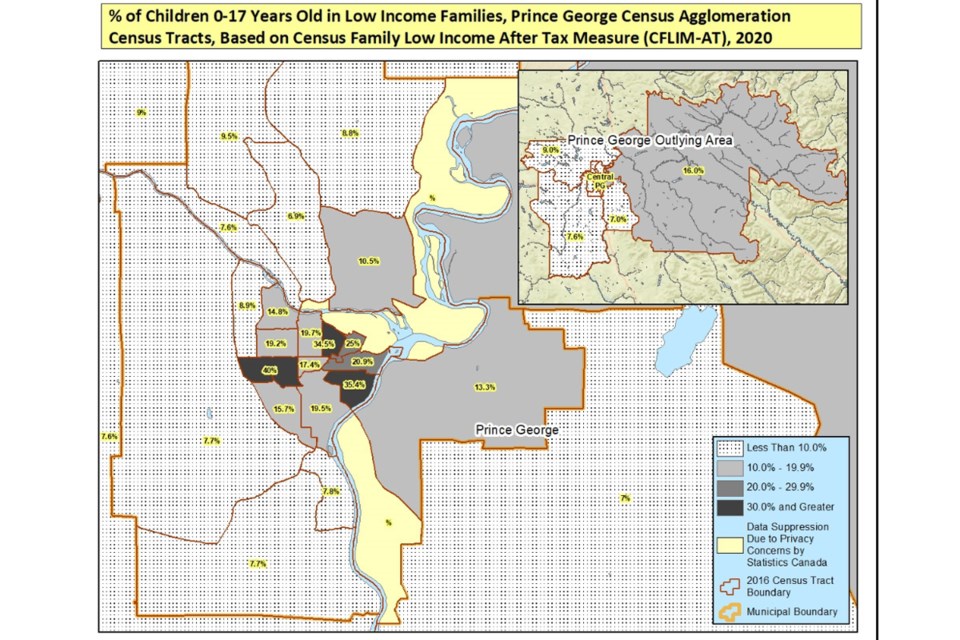There were 2,380 children in poverty in the Prince George census agglomeration in 2020, according to a report released on Tuesday.
The Prince George census agglomeration includes the city and outlying rural areas.
The First Call Child and Youth Advocacy Society released its 2022 BC Child Poverty Report Card this week. Across the province, 13.3 per cent of children and youth (from newborn to age 17) – a total of 116,500 children – were living in poverty in 2020, down from 18 per cent in 2019, according to the report.
“There were 2,380 children (or 12.8% of all children) in the Prince George (census agglomeration) living in poverty in 2020,” the report says. “High child poverty rate census tracts were clustered in and around Downtown Prince George.”
The child poverty rate in 25 census tracts throughout the city ranged from as low as 6.9 per cent up to 40 per cent, the report says.A map of child poverty by census tract is available on the society's website.
The highest rate of child poverty (40 per cent) was reported in the area of the west bowl south of 15th Avenue and west of Highway 97.
South Fort George had the second-highest at 35.4 per cent, followed by the Crescents area at 34.5 per cent.
The lowest rate of child poverty was reported in the lower Hart area at 6.9 per cent, followed by Pineview at seven per cent, and North Nechako and Beaverly were tied in third at 7.6 per cent.
In general, child poverty rates were higher within city limits and lower in the outlying areas.
“First Call’s previous 25 BC Child Poverty Report Cards demonstrated government’s too-slow approach to ending child poverty in BC,” the report says. “Over the past decades, too many children have grown up poor. Now, more than ever, it is critical for governments at all levels to ensure that public services are robust and reach those most in need, that families can access affordable housing and that inflation is curbed.”


